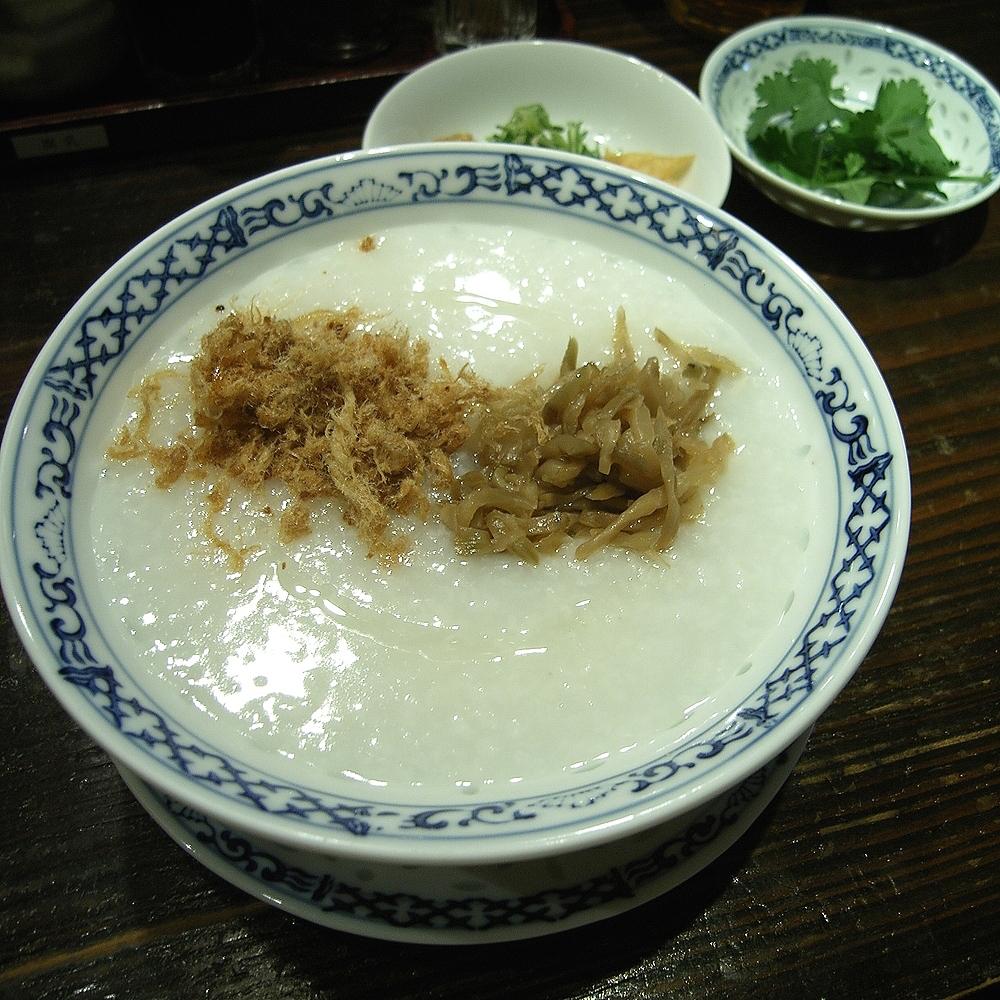Congee has been a traditional health-preserving food in the East for centuries. It is light and moist, yet delicious, and supports those with a weak appetite and even people who have no interest in eating. The fine texture of the dish shortens the digestion process and provides quick energy. It is the best choice for fast energy recovery, especially for the old, tired, and weak. The warmth of it helps the body to perspire to expel toxins through sweat and works especially well for those with cold symptoms.
According to Zhang Zhongjing, a well-known Chinese physician in the Eastern Han Dynasty, eating different congee at different temperatures after taking herbal medicine can be beneficial for several minor ailments. For instance, consuming “ten red-dates soup” for constipation requires patients to eat extremely finely-cooked congee. It is because the soup is strong, but finely-cooked congee helps to coat and soothe the stomach, which allows the medicine to take effect.
In the morning, your body needs time to wake up. Starting the day with congee allows your body to warm up quickly. In a sense, it is the warm congee that primes the digestive system and sends much-needed nutrients to all parts of the body via the rapid circulation of blood.

Congee combined with different ingredients has different effects on the body. Hu Naiwen, a Chinese physician at Shanghai Tong De Tang in Taipei, quotes from the Compendium of Materia Medica that grain congee — such as wheat, glutinous rice, broomcorn millet, and millet — is good for people suffering from diarrhea and those with a weak stomach; grain congee — such as round-grained rice, long-grained rice, maize, and foxtail millet seed — is good for promoting urination and quenching thirst.
Other categories include vegetables, meats, and beans, such as rice, green beans, spinach, shepherd’s purse, celery, leaf mustard, black nightshade, and even duck. Each ingredient has its own therapeutic qualities.
Consuming congee also requires a degree of caution. People with heartburn reflux or bloating might worsen their condition by eating it. If you eat it for medical purposes, you need to consider your body condition and consult with a nutritionist when choosing ingredients.

Chicken congee
- Preparation time: 20 minutes
- Cooking time: 60 minutes
- Serving size: Six
Ingredients:
- ½ pound unboned chicken meat
- ½ cup of brown rice
- ¼ cup of black beans
- Eight dried mushrooms (approx. 30g)
- Two tsp of freshly shredded ginger
- Five garlic cloves
- Nine cups of cold water
- One tbsp of goji berries
- ½ tsp of salt
- One tbsp of chopped green onion
Preparation:
- Wash and soak the black beans and dried mushrooms for at least 4 hours before draining
- Put all the ingredients into the pot except for the goji berries, salt, and green onion
- Bring to a boil and reduce to a simmer for approximately 50 minutes, stirring occasionally
- Switch off the heat and add the goji berries and salt, and sprinkle green onion on top to serve
Translated by Cecilia and edited by Helen







